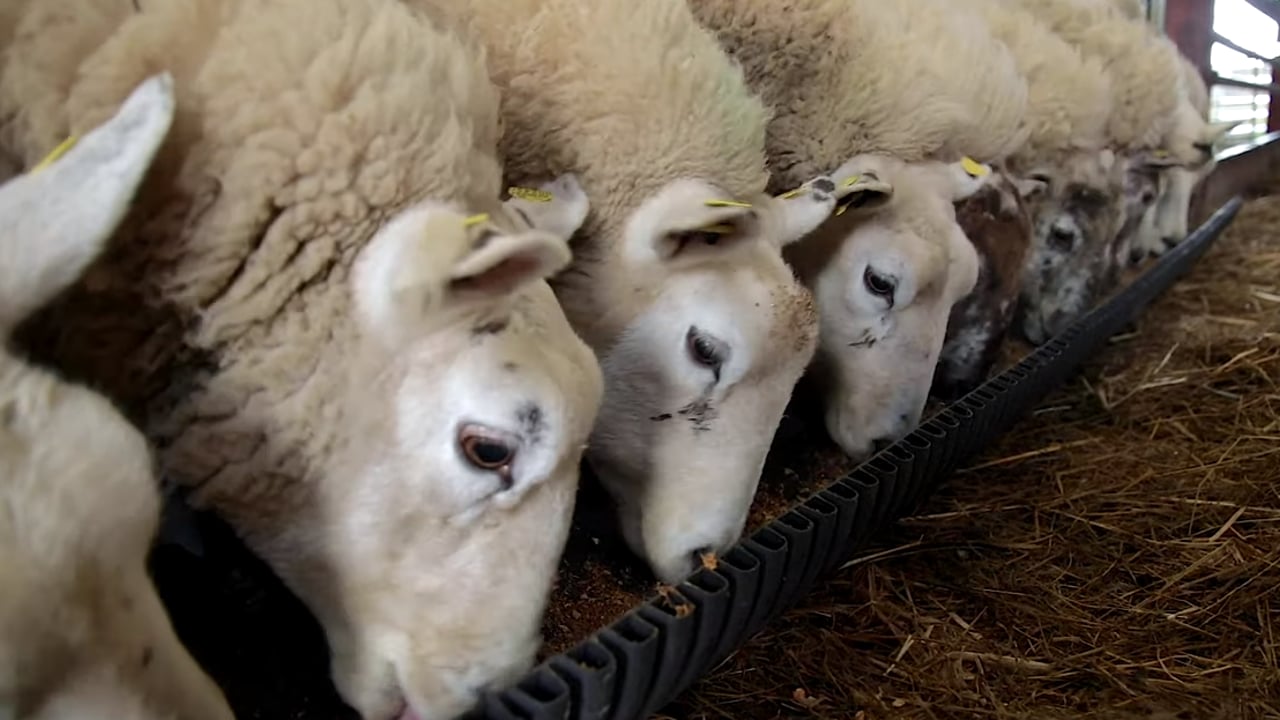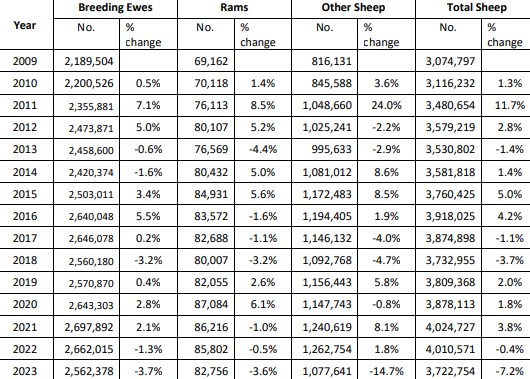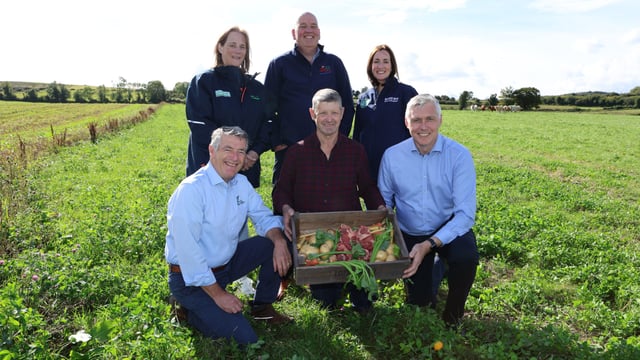Number of breeding ewes decreased by 100,000 in 2023
The number of breeding ewes in Ireland decreased for the third consecutive year last year, the national sheep and goat census has revealed.
There were 2,562,378 breeding ewes over 12 months of age in 2023, which is a decrease of almost 100,000 (3.7%) on the previous year’s breeding ewe population.
The census was carried out in December 2023, but was published this week by the Department of Agriculture, Food and the Marine (DAFM).
A total of 82,756 breeding rams was recorded in December 2023, a decrease of over 3,000 on the previous year.
Data on breakdown of the national flock according to breeding ewes, breeding rams and other sheep collected as part of the annual census since 2009 show that, following a general increase in numbers between 2009 and 2016, overall numbers started to decline in 2017 and 2018 before increasing again between 2019 and 2021.
While the numbers of breeding sheep and rams decreased in 2022 when compared to 2021, the ‘other sheep’ category (including lambs, wethers, cull ewes), continued to increase (by 1.8%) on 2021 figures. 2023 showed a marked decline in the number of sheep in each category.
Since 2009, the number of breeding ewes peaked in 2021, while the overall number of sheep in 2023 (3,722,754) is the lowest it has been since 2014.
The 2023 sheep population shows a decrease of approximately 290,000 (7%) on the total numbers recorded in December 2022.
The DAFM said that 3,722,754 sheep were kept across 34,519 registered holdings in December 2023.
This represents a decrease of around 290,000 on the December 2022 sheep population figure of 4.01 million.
Earlier this year, it was forecasted that the number of breeding ewes in Ireland will decline this year, in line with the trend of falling numbers of ewes forecast across Europe, according to Bord Bia’s sheep meat sector manager, Seamus McMenamin.






